
Senior Thesis
Abstract¶
Electrical conductivity (EC) is sensitive to hydrologic parameters such as pore fluid EC, soil porosity, and water saturation. Empirical relations, such as Archie’s law, correlate these hydrogeologic parameters and measured EC. However, these laws do not yet provide an adequate method for the analysis of dynamic unconsolidated sediment. A managed aquifer recharge project in California is the motivation for this thesis; four high-quality time-lapse EC probes were installed to monitor infiltration beneath an artificial recharge pond. As a way of improving the utility of these EC data I undertook two distinct studies: 1) development of a pore scale numerical rock physics model of unconsolidated sediments, and 2) preliminary inversion analysis of the field data.
The pore-scale numerical model was created to investigate time-lapse electrical response of unconsolidated sediment through the use of two porosity reduction algorithms: 1) addition of fine sediment; and 2) biological clogging. This numerical model explores the effects of hydraulic parameters on the measured bulk EC of a fresh-water saturated, unconsolidated, idealized sediment pack. The results and implications of this numerical model were threefold: 1) a series of ranges, values, and relationships that are applicable to the artificial recharge pond; 2) conceptualization of the relative effects of different hydrogeologic parameters of bulk EC; and 3) a series of code that can be adapted to various pore-scale modeling problems.
The preliminary inversion analysis examined several methods of including a priori information in the inversion program. This initial inversion process illustrates several of the problems with the current methods available for the analysis of time-lapse EC data. A combination of the information gleaned from the pore-scale numerical model with the high-quality EC data will produce greater interpretive power in future work.
Full Paper¶
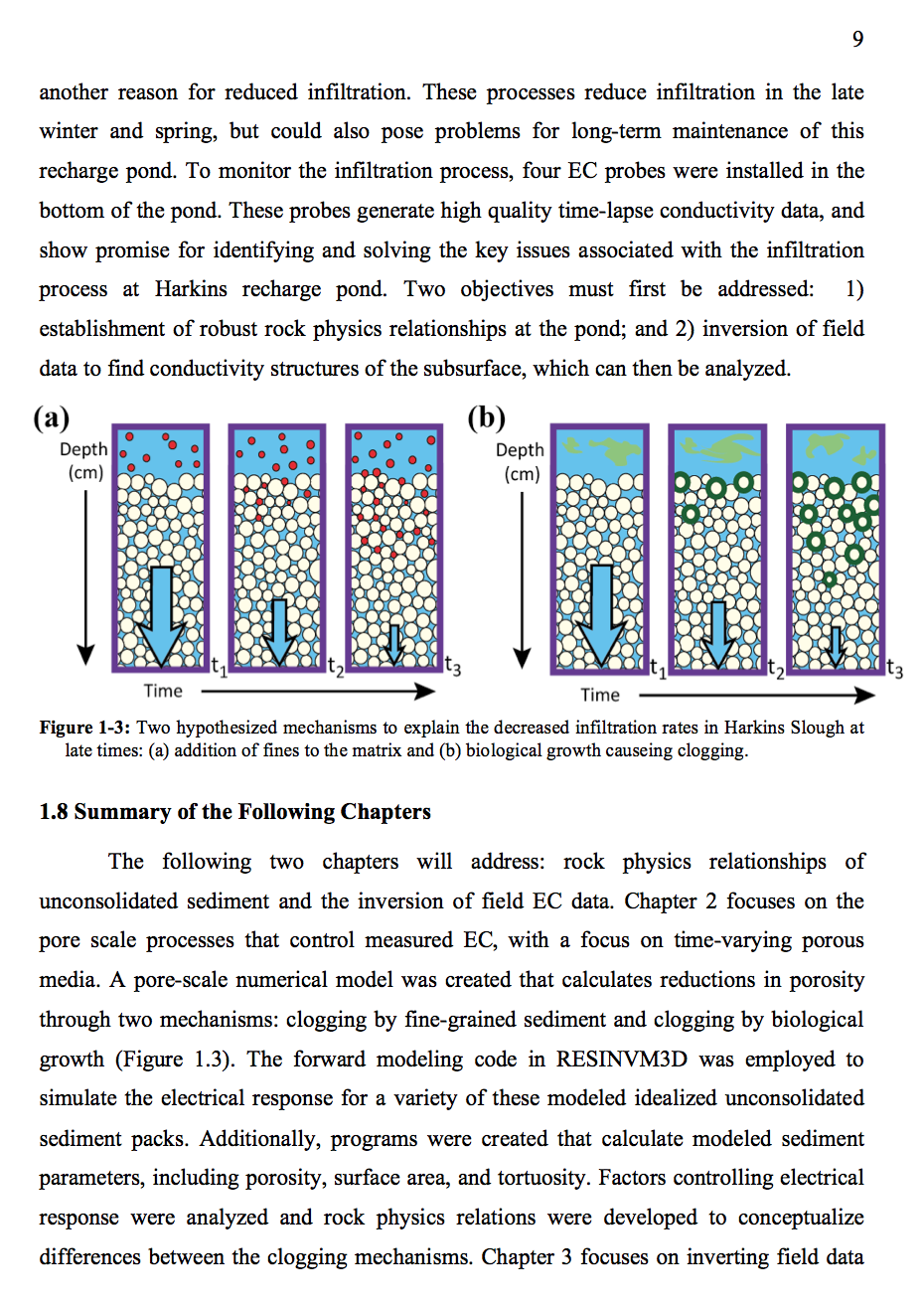
Two Approaches to Improving the Utility of Electrical Conductivity in Time Varying Porous Media: Numerical Modeling and Preliminary Field Inversions. See PDF.
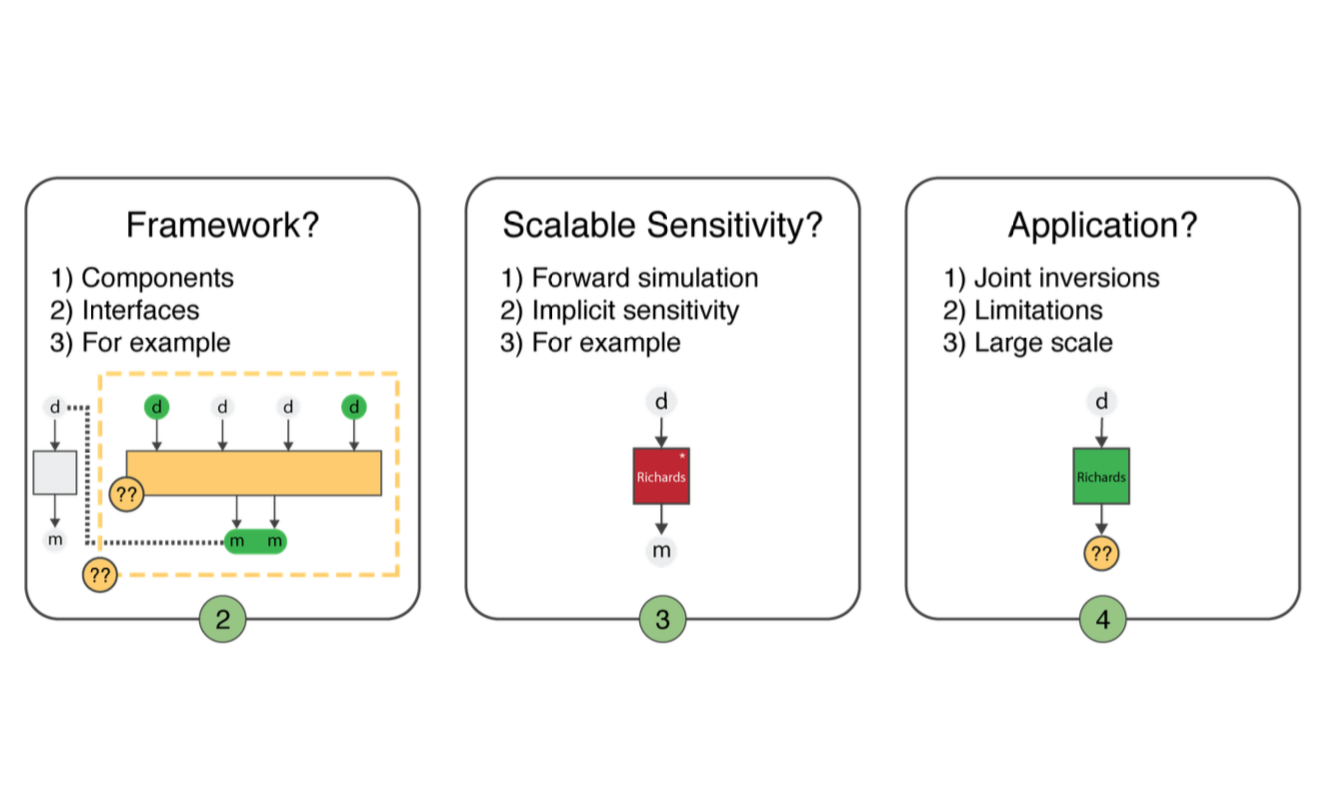
A framework for geophysical inversions with application to vadose zone parameter estimation
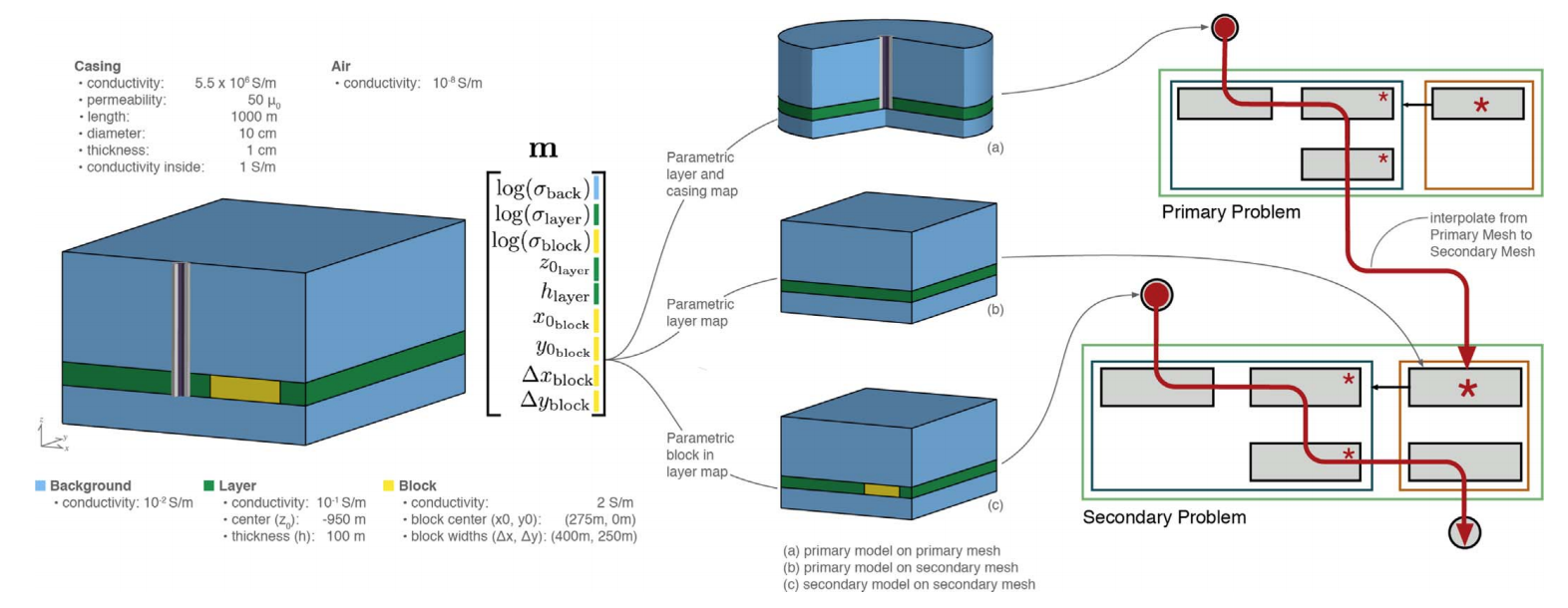
A framework for simulation and inversion in electromagnetics
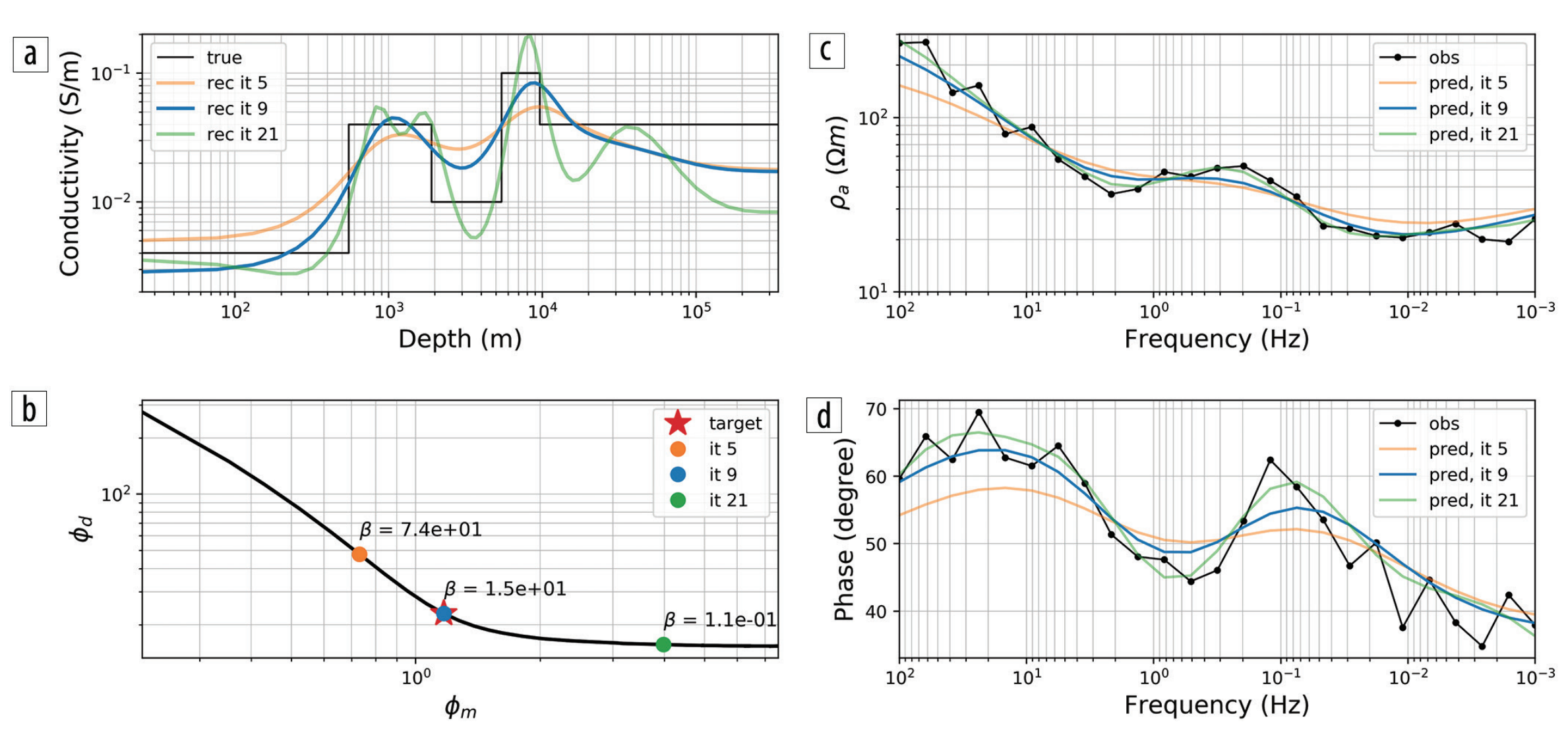
Exploring nonlinear inversions: A 1D magnetotelluric example

Efficient 3D Richards equation inversion.
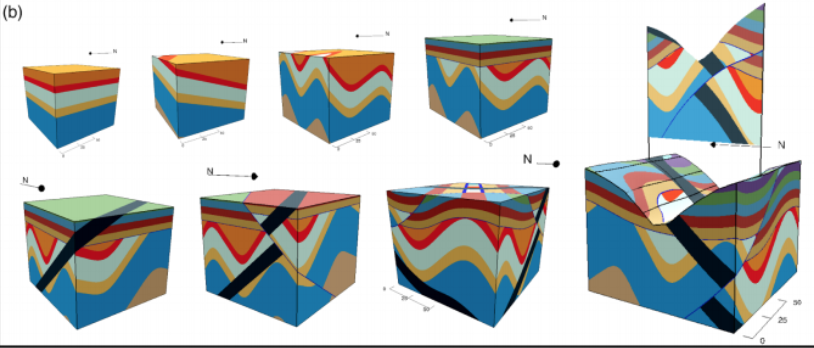
Visible Geology: Creative online tools for teaching, learning, and communicating geologic concepts
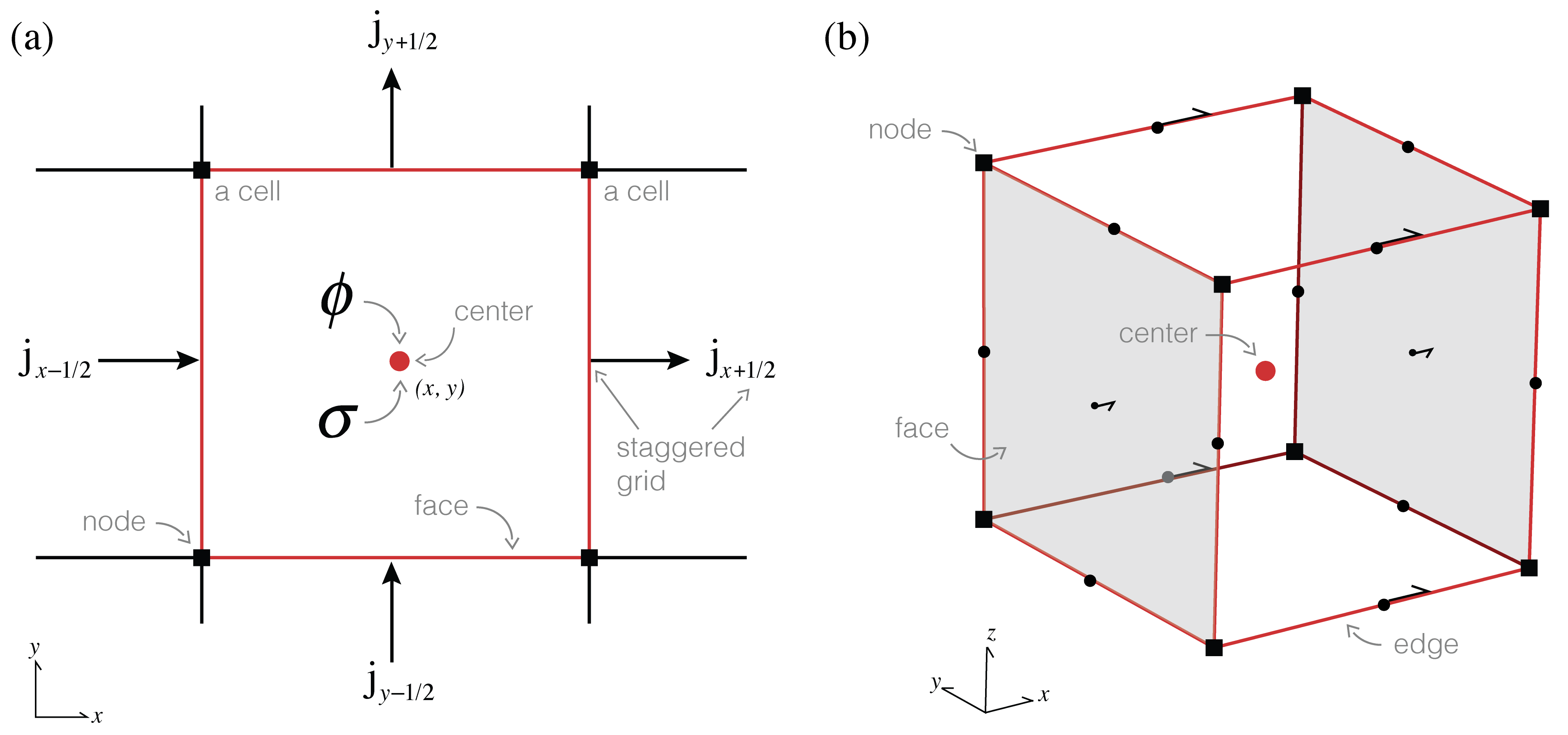
Tutorial on finite volume techniques
